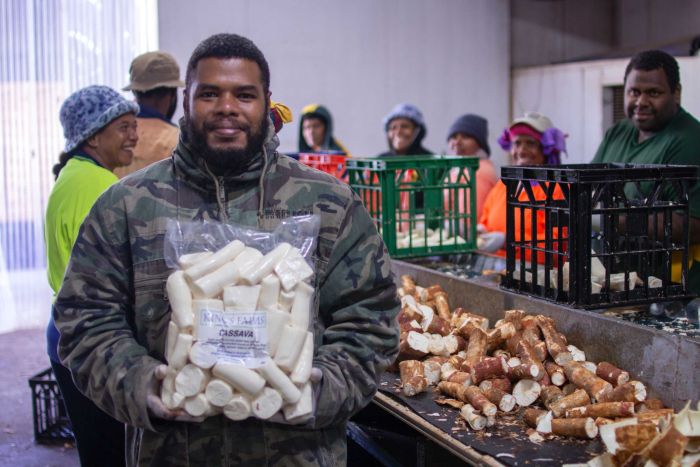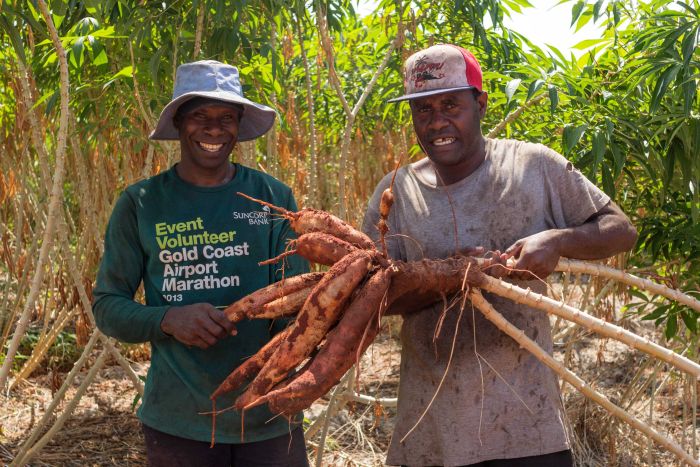
Cassava is cut up, skinned, washed and frozen before being sent to markets. (ABC Rural: Daniel Fitzgerald)
Richard Butler | from ABC Rural | 30 Dec 2018
A Northern Territory mango farmer who grew cassava at the request of his Pacific Islander workers believes the plant has the potential to be a profitable crop for the Top End.
When Katherine farmer Mitchael Curtis employed workers from Vanuatu to pick his mangoes, they asked for cassava for their meals.
Mr Curtis struggled to find any cassava to buy, so he planted some on his farm.
When the crop grew so well that he ended up with much more than his workers could eat, Mr Curtis decided to sell the excess to the Sydney markets.
“[Australia] imports quite a bit [of cassava] from Fiji and the Pacific Islands, so it is just a matter of tapping into that market,” Mr Curtis said.
“At the moment there is a shortage because of the cyclones they have had over there.
“So, there is a demand but its whether or not we can get it there [to market] and still make money, that is the issue.”
Testing the market
With the Katherine mango season finished, the Vanuatu workers have been harvesting, chopping, peeling and packing the cassava into freezer bags, ready for sale.
Mr Curtis said he wants to test the market with this first shipment of cassava, with the view to expanding his operation next year.

Workers from Vanuatu requested cassava for their meals while working on Mitchael Curtis’ mango farm near Katherine. (ABC Rural: Daniel Fitzgerald)
“The main people that will be eating it are Pacific Islanders, Malaysians, Indians and South Americans, they all love it,” he said.
Mr Curtis said he expects to get around $2 to $2.50 per kilogram for the finished product.
“If this exercise proves to be successful — I’m not talking financial, just that the product is good — and it is accepted well in the market, then we have to look at much better ways to process it,” he said.
“We currently have 20 people peeling, which is very, very expensive, but there is equipment to peel cassava, whether or not that will be to the standard they want for the market, that will be the next stage of that journey.
“It is a good product to grow, it looks fantastic when it is packaged, if we can get it to the point that it is productive, it’s also a crop that I can have 12 months of the year.
“I could send some out every week of the year and have some income coming into the farm.”
Commercial crop potential
The cassava was planted in the early wet season and irrigated with a centre-pivot during the dry season.
Cassava has been trialled as a cattle feed by the NT Department of Primary Industry, and at least one other Katherine farmer has been experimenting with the crop.
With some tweaks to his processing system, Mr Curtis believes cassava could have a future as a commercial crop on his farm.
“It is ideally suited to our area, but the issue is that it grows so well, we’ve had tubers up to a metre long going into the ground,” he said.
“Conventional potato harvesters are only going to take the top section — so it’s a matter of finding a way of getting it out of the ground effectively and efficiently enough, and then finding a way of processing it.
“If we can do that — and the demand is there, I think we are on a winner.
“But it is a long way between this year’s trial and having enough on the farm to be a proper commercial product.”






